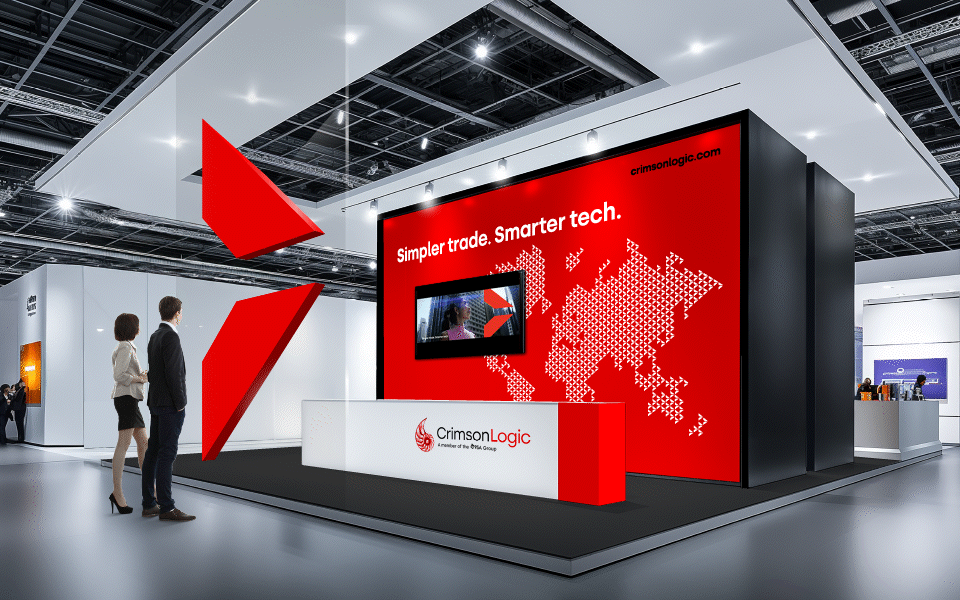10 Inspiring Company Branding Examples and Insights
Discover top company branding examples. See how 2M Precision, Cali, and Singapore Airlines excel in innovation and customer loyalty. Click to explore insights!

Discover top company branding examples. See how 2M Precision, Cali, and Singapore Airlines excel in innovation and customer loyalty. Click to explore insights!


Walk into any coffee shop in Singapore, London, or New York, and you'll notice something curious. The laptops around you bear the same glowing Apple. The coffee cups display that familiar green siren. The trainers under the tables feature an unmistakable swoosh. These aren't coincidences. They're the visible markers of branding done exceptionally well.
Strong company branding has moved beyond marketing departments and agency pitches to become a fundamental business requirement. It's the difference between customers choosing you or scrolling past. Between charging premium prices and competing on cost alone. Between building a business that lasts or one that fades when the next competitor arrives.
This article examines 10 companies and agencies that have cracked the branding code. We've selected five global brands you'll recognise instantly and five Singapore-based agencies proving that world-class branding isn't confined to Silicon Valley or Madison Avenue.
So, let's discuss the 10 inspiring company branding examples and the insights they give.
Branding is much more than just a logo or a catchy slogan; it's the essence of how your customers perceive your company, its values, and the experience it delivers. In today’s competitive market, a well-crafted brand can be the difference between a business that thrives and one that fades into the background.
Let's explore 10 inspiring examples of companies that have mastered the art of branding.
Nike stands as one of the world's most recognisable sportswear brands, valued at over $29.4 billion. Founded in 1964, the company has transcended its product category to become a cultural icon that represents athletic achievement and personal determination.
Nike's branding power lies in its ability to sell aspiration rather than products. The "Just Do It" tagline, introduced in 1988, captures a universal human desire to overcome obstacles and push beyond limitations. This message remains consistent across every touchpoint, from advertisements featuring elite athletes to social media content celebrating everyday fitness enthusiasts. The swoosh logo requires no accompanying text, a testament to decades of strategic visual consistency.
Focus your brand messaging on the transformation your customers seek, not just the features of your product or service. Nike doesn't sell trainers; it sells the person you'll become when you push past your limits. Identify the emotional outcome your customers desire and build your brand narrative around that aspiration.
Apple has built a brand synonymous with innovation, premium quality, and intuitive design. From its founding in 1976 to becoming the world's most valuable company, Apple has maintained unwavering consistency in its brand promise of technology that "just works" while looking beautiful.
Apple's branding excellence stems from obsessive attention to every customer interaction. The minimalist product design extends to packaging, retail environments, advertising, and even the typography in its operating systems. This comprehensive approach creates a seamless brand experience where every element reinforces the core values of simplicity, elegance, and innovation. Apple doesn't compete on specifications but on the emotional satisfaction of owning and using its products.
Audit every customer touchpoint for brand consistency. Your website, packaging, customer service scripts, email signatures, and physical spaces should all reflect the same core values and aesthetic sensibility. Inconsistency erodes trust and dilutes your brand impact.
Patagonia, the outdoor apparel company founded in 1973, has built a remarkable brand by making environmental activism central to its identity. The company donates 1% of sales to environmental causes and has even run advertisements telling customers not to buy their products unless necessary.
Patagonia demonstrates that authenticity trumps conventional marketing. By genuinely committing to environmental sustainability, even when it conflicts with short-term profits, the company has earned fierce customer loyalty. Their "Worn Wear" programme encourages customers to repair and reuse products rather than buy new ones. This counterintuitive approach has strengthened rather than weakened their brand, attracting customers who share their values and distrust traditional advertising.
Identify a purpose beyond profit that aligns with your company's genuine values, then commit to it fully, even when it's difficult. Modern consumers, particularly younger demographics, increasingly choose brands based on shared values. Superficial purpose statements backfire, but authentic commitment builds lasting loyalty.
Starbucks transformed coffee from a commodity into an experience, growing from a single Seattle shop in 1971 to over 30,000 locations worldwide. The brand has become shorthand for accessible premium coffee and the "third place" between home and work.
Starbucks succeeded by creating a consistent experience that feels personalised. The strategy of writing customer names on cups, the distinctive store atmosphere with comfortable seating and ambient music, and the extensive customisation options all contribute to making a mass-market chain feel individual. The green siren logo and distinctive cup designs have become cultural symbols, appearing in countless social media posts as status markers.
Look for opportunities to add personalisation within a scalable system. Starbucks proves that consistency and customisation aren't mutually exclusive. Consider how you might create frameworks that allow individual expression whilst maintaining brand coherence across all customer interactions.
If you're looking to build a brand with the strategic depth of these examples, agencies like Vantage bring the combination of brand strategy expertise and creative execution that transforms businesses into memorable brands.
Contact us for a branding session today.
Also Read: Understanding Employer Branding: A Comprehensive Guide
Lego, the Danish toy company founded in 1932, has built a brand that spans generations. Despite facing near-bankruptcy in the early 2000s, Lego has rebounded to become the world's most valuable toy brand by staying true to its core promise of creative play through interlocking bricks.
Lego's brand strength comes from understanding its core value proposition and extending it strategically. Rather than diluting the brand by chasing trends, Lego doubled down on the fundamental appeal of creative building. They expanded into films, video games, and theme parks, but always with the brick-building concept at the centre. The brand successfully appeals to both children and adult collectors by emphasising creativity, quality, and the joy of construction.
Resist the temptation to be everything to everyone. Identify your core differentiator and find creative ways to express it across different channels and formats. Brand extensions should amplify your central promise, not distract from it.
Pentahex is a Singapore-based branding agency that has established itself as a strategic partner for businesses seeking comprehensive brand development. The agency works across identity design, brand strategy, and digital experiences for clients in Southeast Asia and beyond.
Pentahex demonstrates the importance of positioning clarity in a crowded market. Rather than presenting themselves as generalist marketers, they've carved out a specific identity as brand strategy specialists who combine analytical thinking with creative execution. Their own branding reflects this positioning, using clean design and thoughtful content to showcase expertise. They've built authority by publishing insights on branding trends and maintaining a strong thought leadership presence.
Position your agency or business with precision rather than breadth. Claiming to do everything makes you memorable for nothing. Identify the specific problem you solve exceptionally well and build all your branding around that expertise. Your own brand should exemplify the quality you promise to clients.
Kinetic Singapore is a leading out-of-home (OOH) media agency that has transformed how brands connect with audiences in physical spaces. Part of the global Kinetic network, the Singapore operation has pioneered data-driven approaches to outdoor advertising in Southeast Asia's dynamic urban environments.
Kinetic Singapore has successfully branded itself around a single compelling idea: that physical spaces and digital insights can combine to create powerful audience connections. In an era when many predicted the death of traditional advertising, Kinetic repositioned OOH media as intelligent, targeted, and measurable. Their branding emphasises innovation and data analytics, challenging perceptions of outdoor advertising as unsophisticated or unmeasurable.
When your industry faces disruption, don't defend the old model. Instead, rebrand around how you're evolving to meet new expectations. Kinetic didn't deny that media was becoming more digital and accountable; they showed how their medium could adapt. Look for opportunities to reposition potential weaknesses as evolving strengths.
TBWA\Singapore is part of the global TBWA network, bringing the agency's "Disruption" methodology to the Southeast Asian market. The agency has created memorable campaigns for major brands whilst building its own reputation for creative excellence and strategic insight.
TBWA\Singapore demonstrates the power of a consistent methodology as a branding tool. The "Disruption" framework isn't just an internal process but a central part of how the agency brands itself. By giving their strategic approach a name and clear articulation, they've created a memorable differentiator that helps prospective clients understand their value. This methodology branding makes abstract creative services tangible and distinguishes them from competitors.
If you have a proprietary process or approach, brand it. Giving your methodology a name and framework makes your expertise more tangible and memorable. It also creates intellectual property that can be taught, licensed, and protected, adding value beyond individual projects.
Foreign Policy Design Group is a Singapore-based creative agency known for bold, conceptual work that bridges art and commerce. The agency has built a reputation for campaigns that provoke conversation and challenge conventional thinking, working with brands that value creative risk-taking.
Foreign Policy demonstrates that a distinctive point of view can be your strongest branding asset. The agency name itself signals their approach: treating brand challenges with the seriousness and strategic thinking of international relations, whilst maintaining creative irreverence. Their portfolio showcases work that takes creative risks, which attracts clients seeking differentiation rather than safe, conventional solutions. By being unapologetically distinctive, they've created a self-selecting filter that attracts the right clients.
Don't dilute your perspective to appeal to everyone. A strong point of view will repel some potential customers whilst creating passionate advocates among others. This filtering effect actually strengthens your brand by ensuring better client fit and clearer positioning in the market.
Sedgwick Richardson is a Singapore-based brand consultancy that combines strategic thinking with creative execution. The agency focuses on brand strategy, identity design, and brand experiences for clients across various sectors in the Asia Pacific.
Sedgwick Richardson's branding strength lies in demonstrating expertise through content and thought leadership. The agency regularly publishes insights on branding trends, case studies, and strategic frameworks that showcase their thinking. This content marketing approach builds trust before prospective clients even make contact, positioning the agency as educators and experts rather than just service providers. Their own brand identity reflects the sophisticated, strategic approach they bring to client work.
Use content to demonstrate rather than claim expertise. Publishing your strategic frameworks, perspectives, and case studies builds authority more effectively than any claims on your website. Invest in sharing knowledge generously; the right clients will recognise and value your expertise.
Also Read: How Brands Communicate Effectively with Consumers
These 10 branding examples reveal consistent patterns that transcend industries and geographies. The strongest brands share several common characteristics: clarity of purpose that guides all decisions, consistent visual and verbal identity across touchpoints, alignment between brand promise and actual customer experience, and emotional resonance that creates loyalty beyond rational factors.
For Singapore and Southeast Asian companies competing in increasingly global markets, these lessons are particularly relevant. The region's dynamic business environment demands brands that can differentiate in crowded categories whilst building trust with diverse audiences. The Singapore agencies profiled here demonstrate that local firms can compete with global networks by developing distinctive methodologies, maintaining creative courage, and building thought leadership.
For Singapore businesses, working with an Enterprise Singapore PMC-certified agency like Vantage can make world-class branding more accessible through the EDG grant support of up to 50%.
1. Why is branding so important for businesses today?
Branding is more than just logos and slogans; it shapes customer perceptions, builds trust, and fosters loyalty. A strong brand helps differentiate your business from competitors and builds long-term customer relationships.
2. How can I ensure my brand remains consistent across all touchpoints?
Consistency is achieved by reviewing all customer interactions, from your website to social media, packaging, and customer service. Ensure that your brand’s core values and aesthetics are reflected in every part of your business.
3. What can smaller businesses learn from large brands like Nike and Apple?
Smaller businesses can learn from large brands by focusing on creating an emotional connection with customers, delivering consistent messaging, and highlighting what makes their brand unique.
4. How can a business develop its own brand identity if it's just starting out?
Begin by defining your company’s values, mission, and target audience. Craft a story around what your brand stands for, and ensure that your visual identity, messaging, and customer experience align with these core principles.
5. Why is content marketing important for building a brand?
Content marketing helps businesses share their expertise, build trust, and engage with potential customers. By publishing valuable content, you position your brand as an authority, attracting customers who align with your values.


